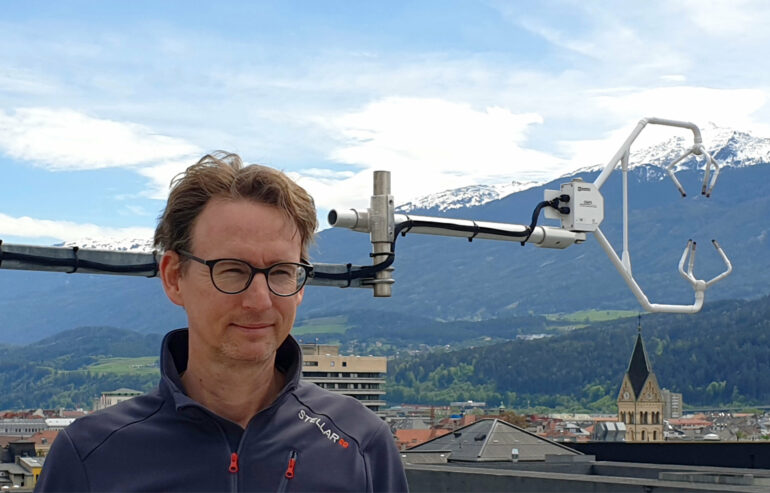The 40-meter-high monitoring tower of the Innsbruck Atmospheric Observatory near the city center of Innsbruck in Austria continuously provides data on the composition of the atmosphere near the surface. Every hour, 36,000 data points are recorded. Using a special measuring method—the so-called eddy covariance method—the concentration of air components can be continuously monitored.
An international team led by Thomas Karl from the Department of Atmospheric and Cryospheric Sciences at the University of Innsbruck has now used this data to study the chemistry of ozone, nitrogen monoxide and nitrogen dioxide in urban areas in detail. The high proportion of diesel vehicles in European cities leads to strong concentrations of nitrogen monoxide. This reacts with ozone to produce nitrogen dioxide. In the atmosphere, nitrogen dioxide decomposes again to nitrogen monoxide and atomic oxygen, which immediately combines with atmospheric oxygen to form ozone.
Common assumption needs to be redefined
This chemical cycle was described mathematically more than 60 years ago in the first air pollution textbook by Philip Leighton. The relationship between the two processes has since been referred to as the Leighton ratio. Computer models of atmospheric chemistry use the Leighton ratio to minimize complexity by deriving the concentration of ozone, nitric oxide, and nitrogen dioxide from the concentration of each of the other two.
In practice, this has been used, for example, to derive ozone concentrations in areas polluted by nitrogen oxides. The Innsbruck atmospheric researchers’ data now show that in the presence of high nitrogen monoxide emissions, computational simplifications made by Leighton lead to incorrect results. Thomas Karl says that “in cities with high nitrogen monoxide emissions, this ratio can be overestimated by up to 50%, which can lead to model calculations overestimating ground-level ozone concentrations in urban areas.” The effect of chemistry—turbulence interactions—plays a significant role in the lowest layer of the atmosphere, up to 200 meters above the ground.
Responsible for the effect studied in Innsbruck is the combination of strong turbulence in urban areas in the presence of high nitrogen monoxide emissions. The mixing of the gases combined with the relatively rapid chemical processes lead to more ozone being converted into nitrogen dioxide. The researchers’ data also show that direct emissions of nitrogen dioxide from urban traffic are largely negligible in comparison to secondary formation.
“It remains important to note that environmental regulations do not rely on model calculations but come into effect depending on actual measured pollutant concentrations,” Thomas Karl said.
The results have now been published in Science Advances.
More information:
Thomas Karl, High Urban NOx Triggers a Substantial Chemical Downward Flux of Ozone, Science Advances (2023). DOI: 10.1126/sciadv.add2365. www.science.org/doi/10.1126/sciadv.add2365
Provided by
University of Innsbruck
Citation:
Underlying assumptions of air quality need to be redefined, says study (2023, January 18)
